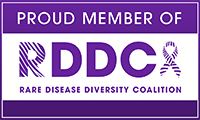Drs. Torok and Chen will use spatial transcriptomics in combination with single-cell RNA sequencing (scRNA-seq) to analyze skin biopsies from a range of juvenile-onset scleroderma patients. Spatial transcriptomics allows researchers to measure gene activity (transcription) in a tissue sample and to map where in the tissue the activity is occurring.
This enables detection and visualization of specific cell types and their gene expression within a tissue, assessment of disease-associated changes to the tissue as a whole or to specific cells within the tissue, and the location of immune cells within the tissue. Because the function of a cell is highly dependent upon its interactions with neighboring cells, spatial transcriptomics can complement the more detailed information that is obtained by scRNA-seq, providing a snapshot of “who is talking to whom” at a cellular level.
Drs. Torok and Chen will analyze skin samples from juvenile-onset systemic sclerosis patients pre- and post-autologous stem cell transplant (ASCT) and localized scleroderma patients pre- and post-treatment with methotrexate. They will also look at affected and unaffected adjacent skin in localized scleroderma.
Together, these analyses will provide a look at shifts in cell abundance, activity (gene expression), and location pre- and post-treatment as well as in affected as compared to unaffected skin in juvenile-onset scleroderma patients.

